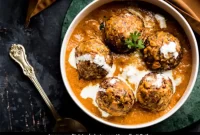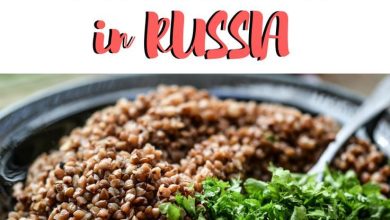Cuisine of India – the taste and flame of the most popular national Indian dishes and drinks
There is a cuisine of peoples, states, regions, even estates, castes of India. This is one big unifying name, known to us as “Kitchen of India”. We will not set ourselves the task of understanding all the nuances and shades of Indian cuisine, dividing it into southern or northern. In addition, we must remember the fact that Indians borrowed many dishes from different peoples of the world – Mongols, Arabs, Turks …
This trip to India was my first overseas trip many, many years ago. I went to India for real Indian Ayurveda, south to the state of Kerala. It was a fun journey without knowing the language in the great company of my most important teacher in life – my dad. We set out recklessly on this desperate undertaking through Qatar with lengthy connections and long waits.
Naturally, we had to get acquainted with Indian cuisine immediately – at the very first breakfast. Having typed some greenish noodles from a wonderful hotel saucepan, our amazement knew no bounds …
Anyone who has ever touched Indian cuisine will say that it is unlike any other in the world. Initially, you do not even know what you are experiencing – delight or an extreme form of embarrassment from a feverish alternation of tastes and smells. You can try just one dish, when suddenly the whole palette of tastes from spicy to sweet will pass in a wave through all your taste buds and smell, and flare up somewhere deep in the brain.
Most likely, some kind of green curry or something like that, prepared especially for hotel guests. With amazement, we contemplated then spherical dry cakes – chapati, not imagining how “such” can be eaten. However, some things immediately and irrevocably won our hearts, for example, soft naan cakes with different fillings – cheese, herbs, black sesame – kalonji.
The Indians borrowed some dishes and methods of their preparation from different peoples of the world – for example, how to make cream and bake bread in the tandoor they were taught by the Mongols, who ruled these lands for a long time. And from the Spaniards, they learned to add sweet paprika to dishes, which they use to this day. We also see Arabic influences on meat dishes with the prefix “kofta”.

However, no matter what the Indians borrowed, they invariably turned any dish into their own creation, subject to certain canons of Hinduism and Vedic cuisine. And it’s not even about abstaining from meat or a raw food diet. We are talking about a whole Ayurvedic philosophy, which they used both for healing the body and for proper cooking.
Ayurvedic cooking is about finding a special balance between what is tasty and what is good for a particular person. This is a balance of various tastes – bitter, salty, spicy, sweet, tart in one dish. Each of the dishes was supposed to balance the osha-constitution of a person, help him be cleaner and healthier, remove illnesses and discomfort. Therefore, a competent combination of vegetables, legumes, meat and a large number of spices has become the basis of Ayurveda and the entire cuisine of India.
Definitely, one who has tried Indian cuisine is unlikely to remain indifferent to it – it can cause both sharp denial and passionate love. How it happened to me! And this is despite my dislike for spicy dishes :-)) I just can’t resist all these goodies, no matter how hard I try!
By the way, it is completely wrong to think that Indian cuisine is exclusively vegetarian cuisine. There is no prohibition on meat in treatises on Ayurveda – there are only clear instructions for which dashes of a person should not eat it or should eat less often, and for whom it is extremely necessary to use it.
What kind of meat is better to choose for yourself according to osha, what fruits and nuts are better to eat, how best to process vegetables or eat them whole raw – all this is the basis of Ayurveda.
Yes, it is true that in the south of India there are a lot of vegetarians, unlike in the north or the highlands. Some Indians eat meat occasionally, no more than once a week, while others do not eat it at all. Some drink buffalo milk and eat yogurt, while others do not even touch them. This is closely related to the religion, climate and traditions of the family or caste.
But let’s try to understand in order the main types of dishes, drinks, some popular spices, and what Indian bread is like.
DRINKS
Lassi: Don’t confuse this great fermented and healthy drink with a milkshake. Lassi is made from dashi yogurt with water and salt or sugar/honey. Sometimes a pinch of ginger or cumin cumin is added here. Lassi in the classic version I love most of all, moreover, it is in its salty version – after all, this is an incomparable drink, very healthy and refreshing in the heat!
It is considered a classic drink in the Punjab province and in general throughout North India and Pakistan. I suspect that it was this drink that the Indians adopted from the ancient Mongols, who greatly respect sour-milk products. When lassi is whipped with water, the texture of the yogurt becomes more easily digestible, which is very beneficial for our digestive tract. However, if you want something more pronounced, then try fruit lassi – with mango, pineapple, papaya.
Chai masala with spices is an excellent warming drink, which is indispensable for thin people, especially in cold and windy periods. The history of the drink is shrouded in darkness – either the colonizers used it to tone up their slaves, or it is still an ancient Vedic drink. But he was so loved by the Indians for his ability to restore immunity, have a beneficial effect on the brain.
gastrointestinal tract, relieve coughs and warm in the cold seasons, that now they consider him their national drink. Although, there are disputes with Thailand for the palm in the invention of the drink, but in ancient times the Indians definitely had such tea, without black teas, but with the obligatory herbs and buffalo milk.
In addition to all these functions, it is believed that masala tea regulates metabolic processes and prevents weight gain. However, remember that such a mixture of spices is not suitable for those who have any ulcerative manifestations in the gastrointestinal tract. I just can’t imagine my life without this healthy warming tea!




